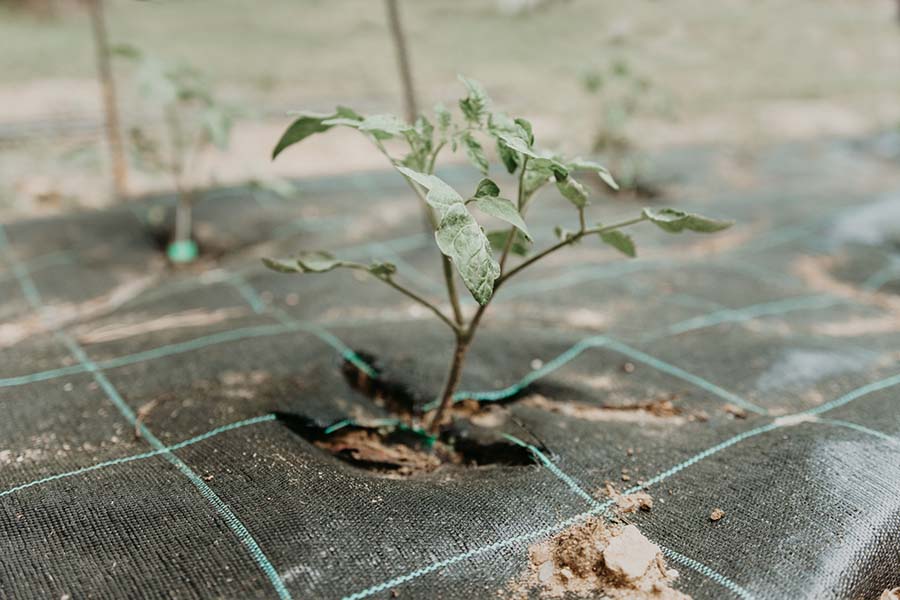The Never-Ending Weed Battle
Weeds. Just the word can make a gardener break into a sweat. In fact, you’ve probably been there: despite carefully preparing your soil and lovingly planting your seedlings, a sea of green invaders appears the moment you turn your back. These pernicious attacks can feel like an endless, frustrating battle.
What makes weeds so frustrating? For starters, they’re greedy. Weeds compete with your cultivated plants for water, sunlight, and nutrients—everything they need to survive. This relentless competition can stunt your plants’ growth, reducing yields from your vegetable garden and blooms in your flower beds and creating an overall lack of vigor in your landscape. Ignoring emerging weeds can even lead to cascading effects, weakening your cultivated plants and leaving them susceptible to stress and disease.
Weeds are also reproductive powerhouses. They’ve evolved ingenious methods to leverage wind, water, birds, and even your own gardening tools to scatter their seeds far and wide. The sheer volume of seeds a single weed can produce – pigweed can produce over 100,000 seeds per plant annually – makes complete eradication almost impossible. It can feel like a never-ending game of whack-a-mole: you diligently get rid of one patch, only to find ten more emerging in its place, seemingly overnight.
Weed control is a massive time commitment. You may have spent countless hours on your hands and knees, pulling weeds, carefully cultivating the soil to remove them, and constantly trying to regain control of your garden. This is precious time that could be better spent enjoying your prized flowers, savoring the taste of your homegrown vegetables, relaxing in your outdoor oasis, or simply tackling other enjoyable projects around your home. In their quest for a more manageable weed solution, many gardeners turn to garden fabric or weed barriers to finally gain ground in this ongoing battle. Unfortunately, many common weed barriers are fragile, quick to degrade, and need to be frequently replaced - another troublesome chore to tackle.
Unfortunately, the battle against weeds can be so discouraging and relentless that some gardeners
ultimately abandon their hobby altogether. But there’s an effective long-term solution that can significantly reduce the burden of weeding and maintain a healthy, vibrant garden. Let’s look at the possibilities.
Introducing Your Secret Weapon: Woven Landscape Fabric
This type of landscape fabric, often referred to in more industrial applications as a slit film woven geotextile, is a significant step up in performance and longevity compared to the more common felt-like non-woven fabrics you might be familiar with from general gardening and home improvement stores. It’s made by weaving together thin, flat strands of material to create a strong, dimensionally stable, and remarkably durable barrier. Slit film woven geotextiles have a long and successful history in construction and civil engineering projects for stabilizing soil, controlling erosion, and managing drainage. Today, they’re increasingly recognized and applied as a highly effective weed barrier in home gardens and professional landscaping. In fact, while you might not yet see it as prominently displayed as other options in all garden centers, it offers substantial advantages for achieving lasting weed control.
The advantage of woven landscape fabric is its ability to block sunlight from reaching the soil, which prevents the vast majority of weed seeds from germinating in the first place. However, its woven structure still allows water and air to pass through the fabric, reaching the root systems of your cultivated plants and maintaining a healthy and balanced soil environment – a significant benefit that impermeable plastic sheeting options cannot offer.
Try This
Here’s a simple experiment to illustrate the impact of light and water on weed growth: choose a small area in your garden where weeds are particularly persistent. Mark off a one-foot by one-foot section using stakes or string. Place a piece of thick cardboard or several layers of newspaper within this marked area, ensuring it covers the soil completely. Weigh it down with a rock or brick to keep it from blowing away. After one week, remove the cardboard or newspaper.
You’ll probably notice that the weeds underneath the cardboard are either dead or significantly weakened due to the lack of sunlight. However, take a look at the soil beneath the covering. Is it noticeably drier than the surrounding soil, especially if there hasn’t been significant rainfall? This simple demonstration illustrates how using an impermeable barrier to block sunlight inhibits weed growth but also restricts water infiltration. As we progress, you’ll see how woven landscape fabric balances weed suppression while allowing essential water and air to reach your garden soil.
Looking Ahead
Now that we’ve considered the challenges of weeds and have looked at the potential of woven landscape fabric, you might be wondering: What exactly is this material, and how is it different from other types of garden fabric? The next chapter will dig into the unique characteristics of woven landscape fabric, including how it’s made, what it looks and feels like, and, most importantly, what sets it apart as a superior solution for long-term weed control in your garden.




